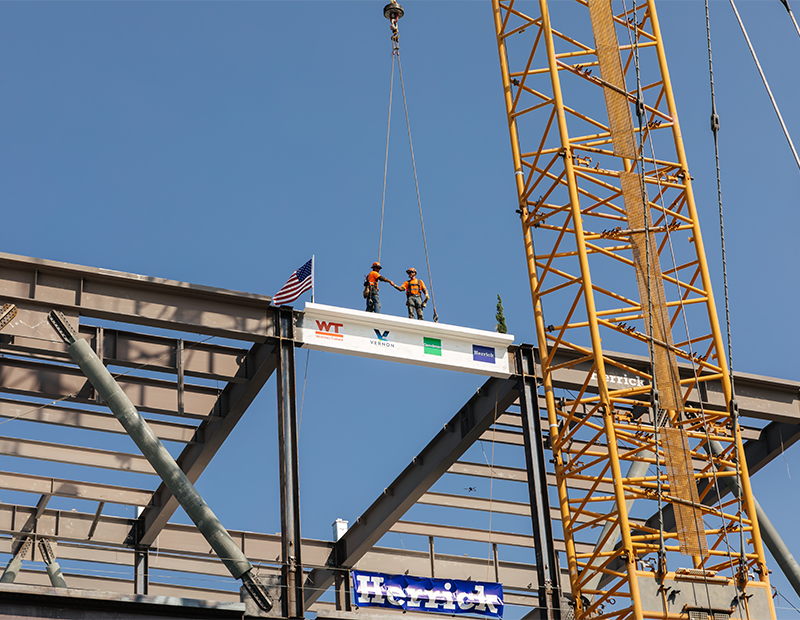Opportunity Zones Continue to Make an Impact
Edmon Rakipi, principal at Opp Zone Capital, shares why he expects the Opportunity Zone Program to revitalize some of the hardest-hit real estate sectors going forward.
The investment activity trajectory in qualified Opportunity Zones has been fluctuating since the end of last year, when important clarifications were added to the program legislation. Mirroring the economic outlook, the program had a great start to 2020, followed by a slowdown in spring and a rebound at the beginning of summer, according to commercial real estate valuation firm BBG.
Although the nation is bracing for a new slowdown in the last quarter of the year, Notice 2020-39—issued by the Internal Revenue Service in June—is expected to boost investors’ confidence in placing capital. Edmon Rakipi, principal at Opp Zone Capital—an entity that provides specialized Opportunity Zone investment and fund management services nationwide—expects the OZ program to contribute to the revitalization of some of the hardest-hit real estate sectors.
READ ALSO: How the New Senate Relief Bill Could Impact CRE
How has the pandemic impacted Opportunity Zone activity up to now?
Rakipi: The product design changes were because of COVID-19, like the layout of the projects. CARES act provided the relief to investors.
Novogradac reported in April that qualified Opportunity Zone vehicles raised only $10 billion compared to initial projections of $6 trillion. What can you tell us about this?
Rakipi: It is important to note the $10 billion is reported and projected to only be a third of true investments. In fact, CEA has stats saying the number is $75 billion. Furthermore, $6 trillion was the projected amount of capital gains available nationwide, not the number they thought would pour into the OZ space. This is similar to saying “the total market capitalization of all publicly traded companies in the world was $51.2 trillion, so we’re launching a new product and projecting a $52 trillion investment.”
In what ways has the pandemic provided more opportunities for the OZ Program?
Rakipi: The pandemic has opened opportunities in a few ways. The first is through distressed properties which are providing real estate investment opportunities under market value. The volatility in markets caused investors to sell their equities and this is also allowing them to realize gains and look for safer investments in tangible assets. The government is also providing relief to businesses, with the OZ census tract a priority for the U.S. Economic Development Administration.
Does the OZ Program need more government intervention?
Rakipi: The OZ Program does not need more government intervention. The relief is enough. Private markets are far more efficient than the government. So far, the program has done a great job with relief efforts regarding timelines and testing, but it’s our job to execute.
 What type of commercial properties have investors sought more of since the pandemic broke?
What type of commercial properties have investors sought more of since the pandemic broke?
Rakipi: There are two main asset types that will be sought after post-pandemic. The first option is multifamily, which is the safe option due to its flexibility and ability to provide the investor with multiple avenues to diversify their investment, and the second option is represented by retail, office and hospitality assets. Due to the pandemic, these have either become distressed properties or are on the way to becoming distressed, meaning that investors can buy at depressed rates.
What is the goal of Notice 2020-39?
Rakipi: With Notice 2020-39, we can expect longer time horizons for investors to place their capital gains, relief for testing at the qualified Opportunity Zone funds and qualified Opportunity Zone businesses level, and an extension of the working capital safe harbor to almost 86 months. This extension, put into place due to COVID-19, keeps projects afloat by extending the original 31-month completion deadline.
Are there any immediate effects of the notice?
Rakipi: Absolutely. This notice acts almost like a double-edged sword. At first, we had investors anxious and ready to place capital. These investors have now slowed down with more time to diligently research projects and managers.
How do you expect the OZ Program to revitalize some of the hardest-hit real estate sectors, such as the hotel industry?
Rakipi: There are three key ways opportunity zones can revitalize some of these industries: consolidation, redesign into different asset classes and absorption by well-capitalized groups.
Is there anything else you would like to add about how the program can be beneficial for underserved areas in the upcoming months?
Rakipi: It is important to note that the cheaper cost of capital presented by the OZ Program will make investments viable. As a result, operating businesses are relocating to these areas to take advantage of the incentives, and that creates jobs. Affordable housing initiatives are also being launched in different markets nationwide, which is essential in many of these target areas.








You must be logged in to post a comment.